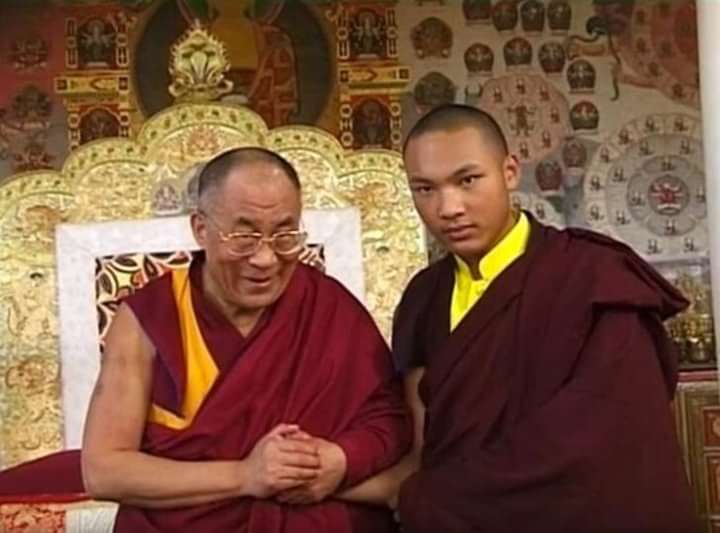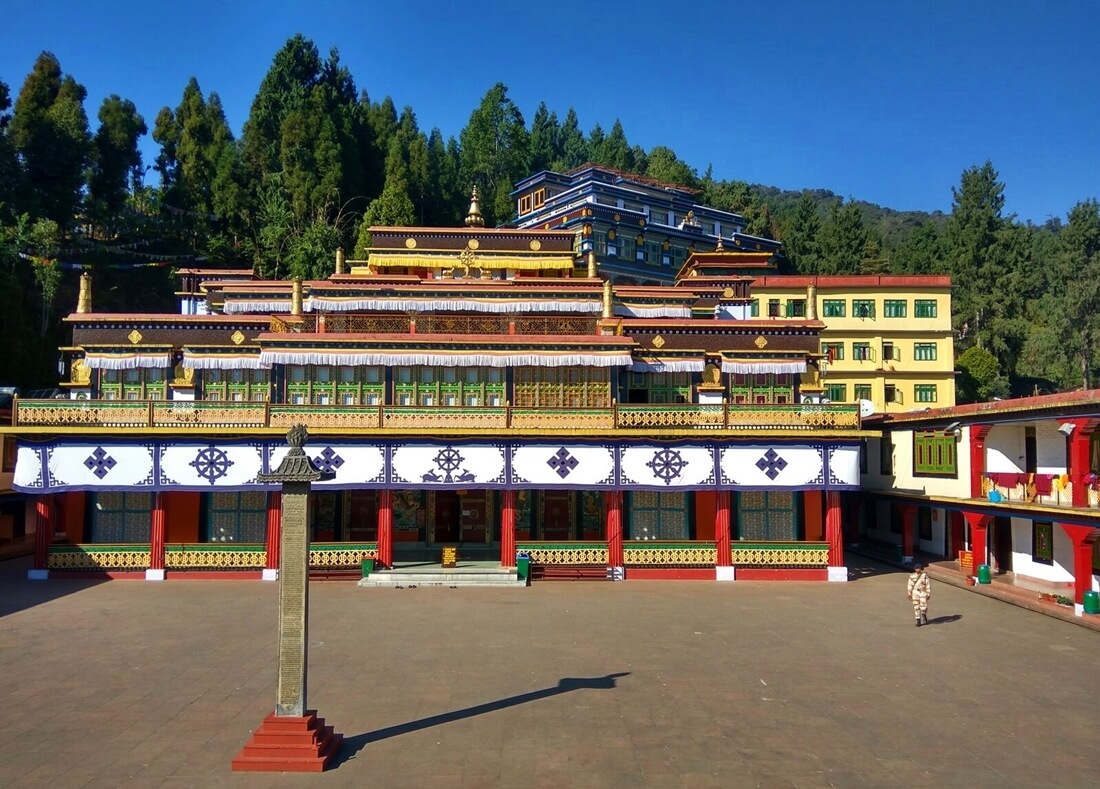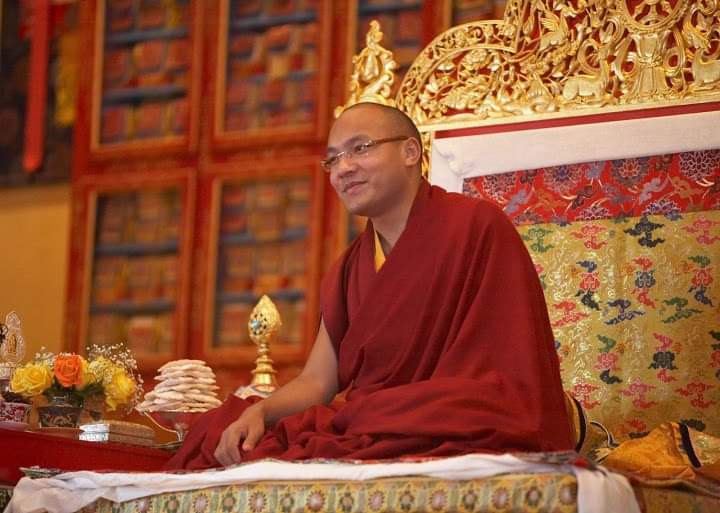By Adele Tomlin
On 11th December, it was reported in the Indian and Tibetan exile media, that His Holiness the 14th Dalai Lama had begun his visit to Sikkim, after 13 years absence to give a teaching there. As of yet, His Holiness the 17th Karmapa, Ogyen Trinley Dorje (supreme head of the Karma Kagyu lineage) has still not been allowed to visit Sikkim, for reasons which still remain unknown to the vast majority of his followers. Thus, it was also surprising to read that the Dalai Lama will also virtually lay the foundation stones of Karmapa Park project at Rumtek Monastery. The Dalai Lama’s visit to Sikkim in October had been cancelled due to a flash flood that claimed the lives of scores of people and displaced thousands.
On 6th October, the 17th Karmapa personally requested via the Tsurphu monastic centre a donation of a significant amount of money to help those severely affected by the floods. Although many may welcome the Dalai Lama’s visit to Sikkim, why was the Karmapa not laying those foundation stones at Rumtek himself?
Rumtek Monastery, is the main (and only) monastic centre of the Karmapas in India, and the 16th Karmapa resided there for several years teaching some of the main Karma Kagyu teachers, until he passed away in the USA in 1981. Before he passed away, the 16th Karmapa gave the 12th Tai Situpa a handwritten official letter in an amulet detailing his future incarnation in Tibet. All the main heart sons (12th Gyeltsab and 3rd Jamgon Kongtrul) accepted Tai Situ’s account, as can be seen in this video here, with the exception of the 14th Shamarpa, who later changed his mind about the letter, and accused Tai Situpa of forgery and deception putting forward his own candidate, Thaye Dorje, which no one else within Karma Kagyu (or the Dalai Lama) accepted as a legitimate candidate.
The 16th Karmapa’s letter nonetheless led to the discovery of the 17th Karmapa, Ogyen Trinley Dorje, exactly as the Karmapa had predicted, right down to his parents’ names.

Despite the fact that the vast majority of Karma Kagyu followers in Tibet and in exile, in particular the Karma Kagyu monasteries, follow the 17th Karmapa, the speech and actions of the Shamarpa/Thaye Dorje supporters (many of them White Europeans) seem to have managed to stop and block the Karmapa from visiting and teaching at Rumtek Monastery since he first came to India in year 2000. This seems to be ongoing. Their previous untrue accusations against Tai Situpa and the Karmapa of being frauds and Chinese spies, as well as launching a court case for complete control of Rumtek, and recent ‘friendship’ meetings with Thaye Dorje, do not appear to have had any effect on the Karmapa being allowed to visit Rumtek, Sikkim and other parts of Asia like Nepal and Bhutan.
When I queried publicly online why the Karmapa was not at Rumtek this month laying the foundation stone of the Karmapa Park, a reliable Tibetan source said that the Sikkimese state wanted the Karmapa to come but that the central Indian government was “not so clear.” During a recent visit of the Karmapa’s sister to Sikkim to visiting an ailing 12th Gyaltsab Rinpoche, she was forbidden (for reasons unknown) from visiting Rumtek Monastery itself.
I was also informed that as the Dalai Lama was the “spiritual leader and head” of the Nalanda tradition of Buddhism, he was invited and hosted there by the Sikkimese. This last statement was rather odd considering how more is being revealed publicly (such as work by E. Gene Smith and Cecile Ducher (2020)) as to how the Dalai Lama/Gelugpa powers not only stole land and monasteries from the other major lineages, but also banned and suppressed their texts which are only recently available for public view. A key concern is a a lack of general knowledge or short memory of the Dalai Lama/Gelugpa political history and actions in Tibet, Ladakh and Bhutan. For example, I have written before about Tibetan research on the history and attempted violent takeover of Ladakh in the 17th Century by the Dalai Lama/Gelugpas, with the aid of the Mongolian military, that led to the Drugpa Kagyu teachers of the Ladakhi King Senge Namgyal, as appointed by the Zhabdrung Ngawang Namgyal (1594–1651) having to flee Ladakh.

It is said that over his 35 years as the temporal and spiritual ruler of Bhutan, Zhabdrung Ngawang Namgyal also repelled a series of Tibetan invasions and overcame internal opposition to unify the country for the first time in its history. On seven occasions between 1616 and 1679, it is said that Tibet launched war against Bhutan, first under the Tsangpa king and, after 1642, under the central Ganden Photang government newly established by 5th Dalai Lama. As a result, it is also claimed that Zhabdrung banned the Gelugpa sect and lineage from ever having monastic establishments in Bhutan. Hence, the lack of Gelugpa monastic presence there and visits by the Dalai Lama.
On the other hand, the Bhutanese had a very strong connection with the 16th Karmapa, Rigpe Dorje and according to his former Tibetan translator, Achi Tsephel they gifted the 16th Karmapa a Bhutanese passport and vast amounts of Bhutanese land when he first escaped Tibet into exile. However, as independent British journalist Mick Brown details in his 2005 book Dance of 17 Lives: The Incredible True Story of Tibet’s 17th Karmapa, the Bhutanese royals openly favoured the unofficial contender for the Karmapa title, Thaye Dorje, due to the marriage of a Bhutanese princess to 14th Zhamarpa’s close personal secretary, Tobga.
However, the 17th Karmapa, Ogyen Trinley Dorje whose breadth and depth of Dharma teachings, activities, female empowerment, vegetarianism and environmentalism since he came into exile India in 2000, are beyond compare not only within the ranks of Karma Kagyu, but with any of the other lineage heads has still not been allowed to visit and teach there.
The Karmapa is an important and essential figure for the well-being of the Tibetans in Tibet and exile and for Tibetan Buddhist followers globally. A speaker of fluent Chinese, the Karmapa’s family members still live in Tibetan areas governed by China. His connection to the language and people is also crucial in order to progress the Tibet issue within Chinese politics. The Chinese government has consistently made it clear that it will not budge on the issue of the Dalai Lama. Surely now is the time for the Karmapa to have the Rumtek court case dropped against him, and to allow him freely to travel, teach and engage in Buddha Dharma activities not only for the well-being and benefit of Tibetans in Tibet and exile but for the whole planet.
So, the question that remains to be answered, is: why is the Dalai Lama visiting Rumtek, when the supreme head of Karma Kagyu, the Karmapa, is still not allowed to go there (and return to India it seems despite his stated wish to do so), with even his sister being forbidden from going? One can only hope that his hundreds of thousands of monastic and lay followers globally get a reasonable answer to that soon.


